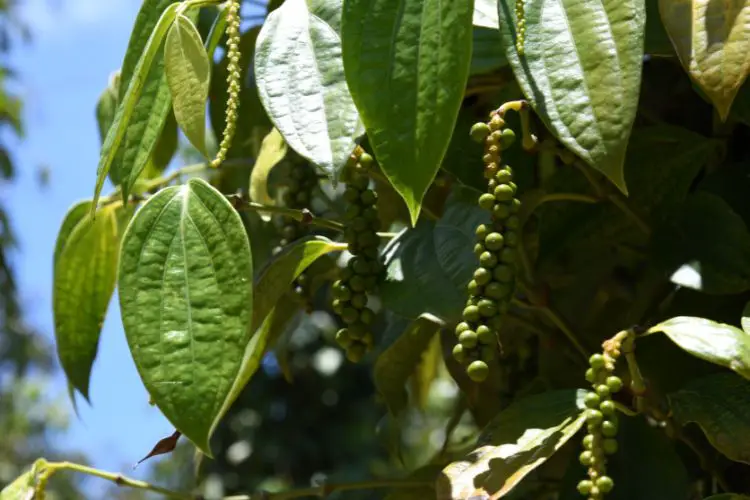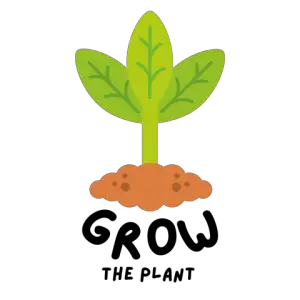Learn how to grow peppercorn with this comprehensive guide designed for home gardeners. From selecting the right location to providing the necessary care, this article will equip you with the knowledge and skills needed for successful cultivation. Whether you’re a beginner or experienced gardener, this informative piece will help you embark on your peppercorn growing journey with confidence.

Introduction to Peppercorn Cultivation
Peppercorn, also known as black pepper, is a popular spice that is widely used in culinary applications around the world. The peppercorn plant, scientifically known as Piper nigrum, is a tropical vine that produces berries which are dried to produce black peppercorns. Growing peppercorn at home can be a rewarding experience, allowing you to have a fresh supply of this versatile spice right in your backyard.
What is peppercorn?
Peppercorn refers to the dried berries of the black pepper plant, which is native to India and is now cultivated in various tropical regions. These berries are used as a spice and are known for their pungent flavor and aroma.
Why grow peppercorn at home?
Growing peppercorn at home offers several benefits. Firstly, having your own black pepper plants allows you to have a fresh and organic supply of this essential spice. Additionally, cultivating peppercorn can be a fulfilling and educational experience, providing you with a deeper understanding of the plant’s growth cycle and requirements.
Selecting the Right Location for Peppercorn
Climate requirements for growing peppercorn
Peppercorn plants thrive in warm and humid climates, making them well-suited for tropical and subtropical regions. They require temperatures between 75°F and 85°F (24°C to 29°C) and high humidity levels to flourish.
Soil conditions for successful cultivation
Peppercorn plants prefer well-draining, fertile soil with a slightly acidic pH ranging from 5.5 to 6.5. It is essential to ensure that the soil is rich in organic matter to support the vigorous growth of the vines.
Choosing the Right Peppercorn Variety
Varieties of peppercorn
There are several varieties of peppercorn, including black, white, green, and red peppercorns. Each type is harvested at a different stage of ripeness, resulting in distinct flavors and uses in cooking.
Factors to consider when selecting a peppercorn variety
When choosing a peppercorn variety for cultivation, consider factors such as the climate in your region, the flavor profile you prefer, and the intended use of the peppercorns in your culinary endeavors.
Planting Peppercorn

Propagation methods for peppercorn
Peppercorn plants can be propagated from seeds or cuttings. Seeds should be soaked in water for 24 hours before planting to enhance germination. Cuttings should be taken from healthy, disease-free vines for successful propagation.
Best time to plant peppercorn
The best time to plant peppercorn is during the warm and humid months of spring. This allows the plants to establish themselves before the onset of the cooler months.
Caring for Peppercorn Plants
Watering and irrigation needs
Peppercorn plants require regular watering, especially during dry periods. However, it is crucial to avoid waterlogging, as excessive moisture can lead to root rot.
Fertilization requirements for healthy peppercorn plants
Fertilize peppercorn plants with a balanced fertilizer during the growing season to promote healthy growth and fruit production. Additionally, incorporating organic matter into the soil can provide essential nutrients for the plants.
Pruning and training peppercorn vines
Pruning is essential to control the growth of peppercorn vines and promote air circulation. Additionally, providing a support structure for the vines to climb on is crucial for their upward growth.
Harvesting and Storing Peppercorn
When and how to harvest peppercorn
Peppercorns are typically harvested when they reach full size but are still green. The method of harvesting varies depending on the desired type of peppercorn, whether it be black, white, or green.
Proper storage methods for peppercorn
After harvesting, peppercorns should be dried thoroughly to prevent mold growth. Once dried, they can be stored in airtight containers away from direct sunlight to maintain their flavor and aroma.
Troubleshooting Common Peppercorn Growing Issues
Pests and diseases affecting peppercorn plants
Peppercorn plants are susceptible to pests such as mites, aphids, and caterpillars, as well as diseases like root rot and powdery mildew. Regular inspection and prompt treatment are essential for preventing damage to the plants.
Tips for preventing and managing common problems
To prevent pest infestations and diseases, maintain good garden hygiene, provide adequate air circulation, and avoid overwatering. Additionally, using organic pest control methods can help manage common issues without the use of harsh chemicals.
Growing peppercorn FAQ

What are the ideal growing conditions for peppercorn plants?
Peppercorn plants thrive in tropical climates with well-drained, fertile soil and ample sunlight. They require a warm and humid environment with temperatures ranging between 75-85°F (24-29°C) for optimal growth. It is important to avoid waterlogged soil, as excessive moisture can lead to root rot. Additionally, peppercorn plants benefit from regular pruning to promote air circulation and maintain their desired shape. Providing support for the plants to climb, such as a trellis or pole, is also essential for their upward growth. Overall, ensuring a balance of moisture, sunlight, and proper care will create the ideal conditions for peppercorn plants to flourish.
How do you harvest peppercorns?
To harvest peppercorns, wait until the berries on the pepper vine turn a bright red or yellow color. Then, using a pair of garden shears or a sharp knife, carefully cut the clusters of peppercorns from the vine. It’s important to handle the peppercorns gently to avoid damaging the vine. After harvesting, lay the peppercorn clusters out to dry in a warm, well-ventilated area for several days until they become dark and wrinkled. Once dried, the peppercorns can be stored in an airtight container for future use.
Are peppercorn plants hard to maintain?
Peppercorn plants can be relatively low-maintenance, making them suitable for home gardeners. They require well-drained soil, consistent watering, and a warm, humid environment. However, they can be sensitive to temperature fluctuations and require protection from direct sunlight. Additionally, peppercorn plants benefit from regular pruning to promote healthy growth and fruit production. Overall, while they may require some attention to their specific needs, peppercorn plants can thrive with proper care and attention.
How to grow pepper from seeds?
Growing peppers from seeds is a simple and rewarding process. Start by selecting high-quality pepper seeds from a reputable source, ensuring they are fresh and viable. Next, plant the seeds in a well-draining seed starting mix, and keep them consistently moist and warm to encourage germination. Once the seeds have sprouted, provide plenty of light and maintain a warm, consistent temperature to support healthy growth. Transplant the seedlings into larger containers or the garden when they have developed a few sets of true leaves. Remember to water the plants regularly and provide support as they grow. With proper care, you’ll soon be enjoying a bountiful harvest of homegrown peppers.
How long do peppercorns take to grow?
The time it takes for peppercorns to grow depends on the variety and growing conditions. Generally, it takes about 6-9 months for peppercorn plants to produce mature peppercorns after being planted. However, it’s important to note that peppercorn plants are typically slow-growing and require a warm, humid climate with well-draining soil. Additionally, they need to be regularly pruned and provided with proper support for climbing. Therefore, cultivating peppercorns requires patience and attention to ensure successful growth and harvest.
What environment do peppercorn plants like?
Peppercorn plants thrive in tropical climates with high humidity and well-drained soil. They require a warm and consistently moist environment with plenty of sunlight, making them well-suited for cultivation in areas with temperatures between 75-85°F (24-29°C). It is essential to protect the plants from strong winds and provide a support structure for their vines to climb, as they are natural climbers. Additionally, peppercorn plants benefit from regular feeding with a balanced fertilizer to support their growth and fruit production. Overall, creating a warm, humid, and well-supported environment is key to successfully growing peppercorn plants.
How to germinate black pepper seeds?
To germinate black pepper seeds, begin by soaking the seeds in lukewarm water for 24 hours to soften the outer seed coat. After soaking, plant the seeds in a well-draining potting mix, covering them with a thin layer of soil. Keep the soil consistently moist and maintain a temperature of around 75-85°F (24-29°C) for optimal germination. It’s important to provide indirect sunlight and humidity for successful germination. Germination can take up to several weeks, so be patient and ensure the soil remains consistently moist throughout the process. Once the seeds have germinated and seedlings have developed several leaves, they can be transplanted into individual pots for continued growth.
Is pepperconr the same as black pepper?
Many people wonder if peppercorn is the same as black pepper. The answer is yes, peppercorn refers to the dried fruit of the Piper nigrum plant, which is commonly ground to produce the seasoning we know as black pepper. Therefore, when a recipe calls for peppercorn, you can use black pepper as a substitute.
Conclusion
Growing peppercorn at home can be a fulfilling and rewarding experience for home gardeners. By selecting the right location, choosing the appropriate variety, and providing proper care, you can successfully cultivate your own black pepper plants. With the knowledge and skills gained from this comprehensive guide, you can embark on your peppercorn growing journey with confidence and enjoy the flavorful and aromatic benefits of homegrown peppercorns.
